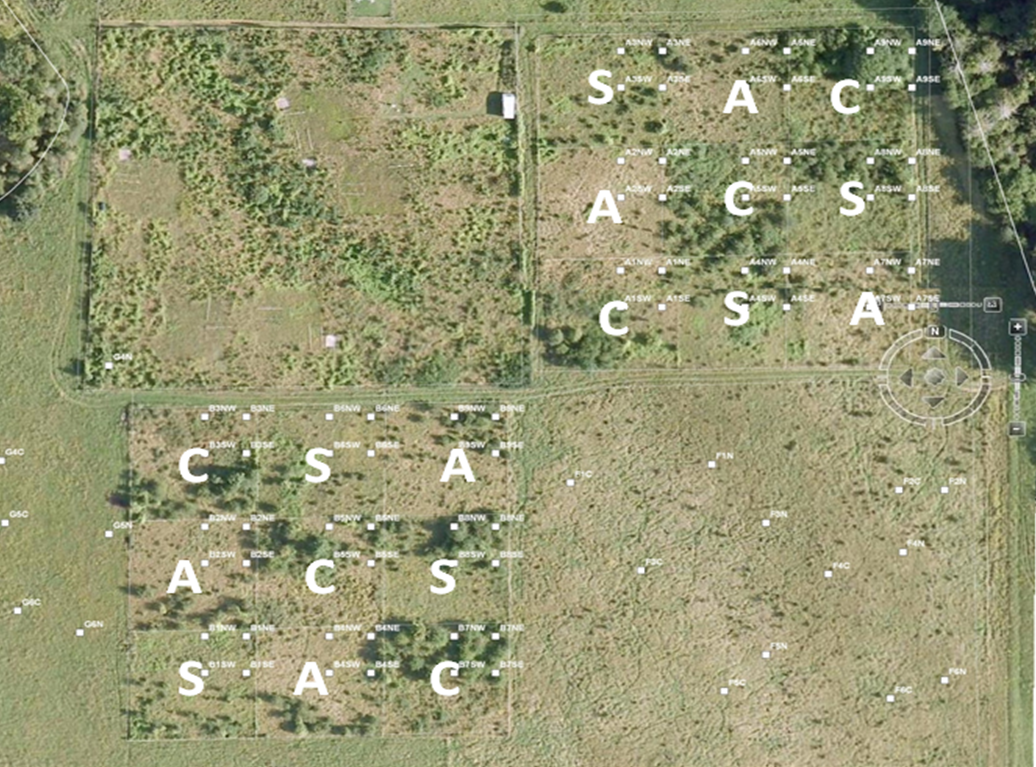Background
This experiment, established in 1983, investigates the impact of grazing on the restoration of calcareous/mesotrophic lowland grassland.
Studying successional processes from arable cultivation to lowland nutrient poor grassland, the effect of different grazing seasons and durations are investigated with a view to finding the optimum restoration method.
Design
The main treatments are in two latin-square grids, each of 9 paddocks. These include 6 ungrazed control replicates (C), 6 spring grazed replicates (S), and 6 autumn grazed replicates (A).
Other treatments are an unreplicated heavy autumn grazed treatment, and an unreplicated spring plus autumn treatment. These are monitored by 12 permanent quadrats.
Media
Blog (17 August 2022): Sara Middleton writes about her annual summer census on the diversity of grassland species at Wytham Woods for her blog ‘Beyond a green carpet’ for the Wellcome Collection.
Results
Results demonstrate that succession from arable land to ancient grassland is not limited by colonist arrival, or seed banks deficiencies, but the ability of certain species to establish and spread successfully.
It is therefore inferred that it may take several centuries for ancient grassland communities to re-establish.
The results from this experiment have practical relevance with regards to establishing realistic end points for chalk and limestone grassland restoration. This is particularly relevant in view of the targets for grassland restoration established by the UK Biodiversity Action Plan.




